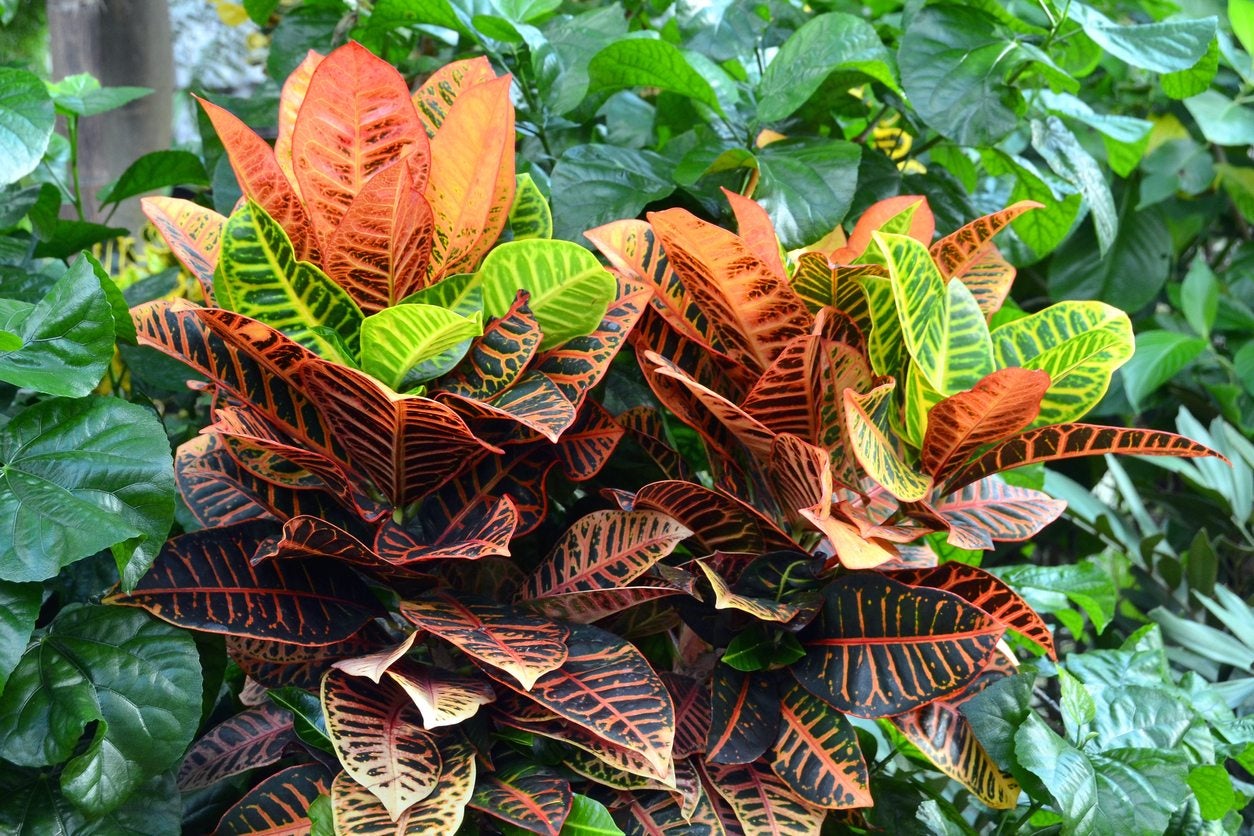Care Of Outdoor Croton Plants: How To Grow A Croton Outdoors


An unforgettable sight when exiting the airplane terminal at Cabo San Lucas are the huge brightly colored croton plants that line the edges of the buildings. These popular tropical plants are hardy to USDA zones 9 to 11. For many of us, that leaves our experience with the plant simply as a houseplant. However, croton in the garden can be enjoyed during the summer and sometimes into the early fall. You just need to learn some rules about how to grow a croton outdoors.
Croton in the Garden
Crotons are thought to be native to Malaysia, India, and some of the South Pacific Islands. There are many species and cultivars, but the plants are most known for their easy maintenance and colorful foliage, often with interesting variegation or speckling. Can you grow a croton outdoors? It depends where your zone is located and what your average low temperatures are per year. Croton is very frost tender and will not survive freezing temperatures. Southern gardeners in frost free zones should have no problem growing croton plants outside. Anyone who lives where there are temperatures that near freezing or 32 degrees F. (0 C.), even temperatures that hover in the 40's (4 C.) can be damaging. That is why some gardeners choose to grow croton in containers on casters. That way, even the slightest threat of cold temps and the plant can be moved to a sheltered location. Care of outdoor croton may also include covering the plant if it is in the ground. The thing to remember is that these are tropical plants and are not suited for freezing temperatures, which can kill the foliage and even the roots. Since croton hardiness is limited to freezing and even slightly above, northern gardeners should not attempt to grow the plant outdoors except in the warmest days of summer. Position the plant so it receives plenty of bright but indirect light to keep the foliage colors bright. Also, place the plant where it will not experience cold northern winds. Use well-draining potting soil and a container large enough to encompass the root ball with a little bit of growing room. Croton does not like to be transplanted, which should only be done every three to five years or as needed.
Care of Outdoor Croton Plants
Plants grown outdoors in appropriate zones will need slightly more water than those inside. This is because sunlight evaporates moisture and wind has a tendency to dry out soil quickly. Watch for pests and disease and handle immediately. When larger plants in the ground are in danger of a cold snap, cover them with a burlap sack or old blanket. To prevent breaking limbs, push in some stakes around the plant to handle the weight of the covering. Mulch around plants with at least 2 inches (5 cm.) of organic material. This will help protect roots from cold, prevent competitive weeds, and slowly feed the plant as the material breaks down. Where freezes are early and severe, grow plants in containers and move them in as soon as fall starts to arrive. This should save the plant and you can care for it indoors until the first warm rays of spring when it can go back outside after all danger of frost has passed.
Sign up for the Gardening Know How newsletter today and receive a free copy of our e-book "How to Grow Delicious Tomatoes".

Bonnie Grant is a professional landscaper with a Certification in Urban Gardening. She has been gardening and writing for 15 years. A former professional chef, she has a passion for edible landscaping.